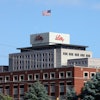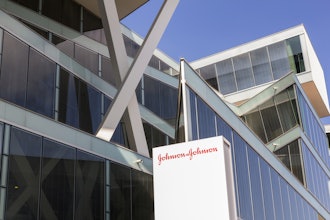
Within the metal forming industry, a wide variety of heavy-duty, metal forming hydraulic presses with capacities of 10,000 tons or more are required to bend, form, bond or straighten aluminum, titanium and alloys into structures and components.
On the production floor, specialized machines such as stretch forming presses, hot stretch straighteners, contour rolls, superplastic forming presses, diffusion bonding presses and powdered metal compaction presses are often required to manufacture to custom metal forming specifications under process-specific applications of pressure and temperature.
Because these machines are customized and require precise controls and processes to reliably achieve the specified final product, partnering with a manufacturer with deep expertise in such metal forming is frequently essential for success.
“A custom-engineered machine and control solution is often required when precise control of position, axis synchronization, force and heat and force is essential for the forging/forming process," said Bill Goodwin, Vice President of Sales and Engineering at Erie Press Systems, a company that manufactures custom-engineered hydraulic presses for applications including metal forming, stretch forming, composite compression molding presses, cold extrusion and forging.
The company was acquired by Park Ohio and is now a part of the largest forging equipment supplier in North America: Ajax-CECO-Erie Press.
Drawing on Erie Press's decades of experience in aerospace applications, Goodwin surveys some of the essential equipment utilized in custom metal forming.
Stretch Forming Machines
When applicable, stretch wrap forming methods provide several unique advantages over pure bending and other types of metal forming. Stretch wrap forming machines operate by stretching the metal to its elastic limit, then wrapping the part around a forming die.
This process increases the metal's yield strength and results in a stronger part. Since stretch forming machines also keep the metal under constant tension throughout the process, they minimize imperfections such as "cans" or "buckles."
Stretch forming machines also perform a task in one step that would otherwise require several machines and multiple steps, improving efficiency and saving time and money. For some parts, where it would otherwise be impossible, stretch forming machines allow for production runs of the part.
Sheet Stretch Forming
According to Goodwin, stretch forming machines for sheets are designed to meet all tonnage, length and width specifications. Historically, these machines have been widely used in stretch forming aluminum fuselage, wing and engine cowl panels.
The process has evolved to forming exterior panels on a high-speed locomotive, recreational vehicles and buses as well as proprietary aerospace and commercial rocket applications.
Additionally, a special adaptation of high tonnage stretch forming machines can manufacture the main structural support spar used on large commercial aircraft. Heavy cross-section beam material is gripped in specially designed jaws, stretched to its yield point and bent over a die that follows the plane's curvature.
Extrusion Stretch Forming
Extrusion stretch forming machines were developed to bend and form complex aluminum, titanium and stainless steel structural components that have been challenging to work with using other manufacturing processes.
Due to highly accurate and repeatable part production, extrusion stretch forming machines have also gained wide acceptance in structural applications within high-speed locomotive, rail, transit and automotive industries.
"Typically, aluminum tends to wrinkle if bent," said Goodwin, whose company designs and builds stretch forming machines for extrusions, with all associated tooling. "However, the stretch forming process can eliminate those defects, because the first step is stretching the part to yield and then bending it so that you can bend extrusions without wrinkling."
High Production Rate Stretch Forming
Aluminum Stretch Forming (ASF) machines have been developed to service the automotive industry's high production requirements. CNC-controlled AC servo motor technology combines with high-resolution load cells and rigidly guided, low friction components to optimize the speed and accuracy for high production rate stretch forming of extrusions.
ASF machines are ideal for stretch-forming extrusions with profiles up to 90⁰ total bend angles, such as bumper and luggage rack support rails and structural frame components used in the automotive industry.
ASF machines use two vertically mounted jaw carriage assemblies to apply full stretching and forming force on the part against a stationary die.
Each jaw assembly includes systems that automatically center and clamp the piece, program tangency tracking, engage a support mandrel into hollow extrusions and provides an inertia suppression system to protect the machine from damage if a part breaks during forming.
Hot Stretch Straightener
This forming machine press is utilized to resistively heat, stretch and straighten long extruded tubes, or flat plates, because the cooling process after the heated extrusion cycle tends to introduce curvature.
When using the hot stretch straightener, the pressure is gradually reduced as the long, extruded metal component cools. This maintains a tensile load on the part, maintaining part straightness during the cooling process.
 Hot stretch straightener machineAjax-CECO-Erie Press
Hot stretch straightener machineAjax-CECO-Erie Press
Contour Roll Forming
Specially designed for stringers and frames, contour roll forming machines bend and twist on three planes and allow for theoretically unlimited lengths. These multi-axis bending machines are utilized to manufacture rounded, structural aircraft parts, such as those used around a fuselage.
Generally, a straight piece is run through the machine and it is bent and curved to the desired shape.
Super Plastic Forming - Diffusion Bonding Hot Presses
Erie Press Systems manufactures many machines dedicated to superplastic forming, both with and without diffusion bonding capabilities. Superplastic forming (SPF) was developed as an advanced forming process for making complicated and large parts and structures, such as vehicle and airplane components, difficult to manufacture by the traditional forming process.
Commonly used materials to form superplastic formed parts are titanium, aluminum, stainless steel and magnesium alloys. The superplastic forming process requires high heat.
When titanium and stainless steel reach temperatures between 1400 and 1850 degrees Fahrenheit (about 1000 to 1100 for aluminum), these metals become incredibly malleable.
When in a superplastic state, pressure from inert gasses (mainly argon) forms the metals. As a result, superplastic forming proves especially useful for producing complex shapes out of difficult to shape materials.
Created to manufacture engine blades, a variety of applications now employ the use of superplastic forming.
The company's hot forming and superplastic forming presses implement a multi-zone heating process that ensures precise thermal control, uniform platen heating and consistent part production.
According to Goodwin, diffusion bonding essentially takes two thin sheets of material and bonds them together into one homogeneous piece via a long heat and pressure cycle. The bonded metal components being joined undergo only microscopic deformation.
 Electric diffusion bonding pressAjax-CECO-Erie Press
Electric diffusion bonding pressAjax-CECO-Erie Press
Isothermal forging
Forging super alloys and other materials with a low forgeability can create difficulties during a metal forging process.
The mechanical properties of some metals may vary greatly over small temperature ranges. Isothermal forging may help eliminate some of the problems associated with manufacturing with these types of materials, particularly concerning more complex parts. This process is also called hot die forging.
Isothermal forging is a hot working process that attempts to maintain the workpiece at its maximum elevated temperature throughout the entire operation. This is achieved by heating the die to or slightly below the starting work piece's temperature.
As forces exerted by the die form the work, cooling the workpiece between the mold work interface is eliminated, and thus, the flow characteristics of the metal are greatly improved.
Isothermal forging may or may not be performed in a vacuum. Isothermal forging is a hot working process that attempts to maintain the workpiece at its maximum elevated temperature throughout the entire forging operation.
“These are typically high tonnage machines that must have the capability to move at a wide speed range, including very slow velocities down to .5 mm per minute to generate a precise strain rate curve required to form these parts,” he explains.
 Isothermal forging pressAjax-CECO-Erie Press
Isothermal forging pressAjax-CECO-Erie Press
Powder Compaction Presses
Manufacturers will take a special blend of metals to achieve certain material properties and turn them into a hybrid powder. After hydraulic presses compact the powder to a specific force, the powder is heated and forged to create a special hybrid piece.
"With powder compaction, manufacturers spin a powdered material at thousands of RPMs while heating it to specified temperatures. The process produces two different metals: a lower-cost metal at its base and a very high-cost metal at its skin. The process then compacts the two layers of powder together and uses this as a raw material to forge into a final multilayered piece," explains Goodwin, whose company offers a variety of designs to accommodate compaction processes for powder metal, ceramics, carbon anodes and more.
The Future of Metal Forming
With all the demands placed on manufacturers for lighter, stronger materials and greater efficiency, innovation must be a priority within metal forming.
Teaming up with a partner that can provide a wide range of specialized, high-tonnage machinery, along with the ability to customize, can be critical to ongoing success.
Because metal forming providers like Ajax-CECO-Erie Press continue to invest in innovation, such a partnership can also provide an edge in future applications.
"In the next five to 10 years, instead of hydraulic drives, we expect electric presses driven by geared servo motors and larger roller screws to become increasingly important to manufacturers for any application that is sensitive to oil leaks or where precise control is required. So, we are developing the technology today," Goodwin said.
---
Del Williams is a technical writer based in Torrance, California.























